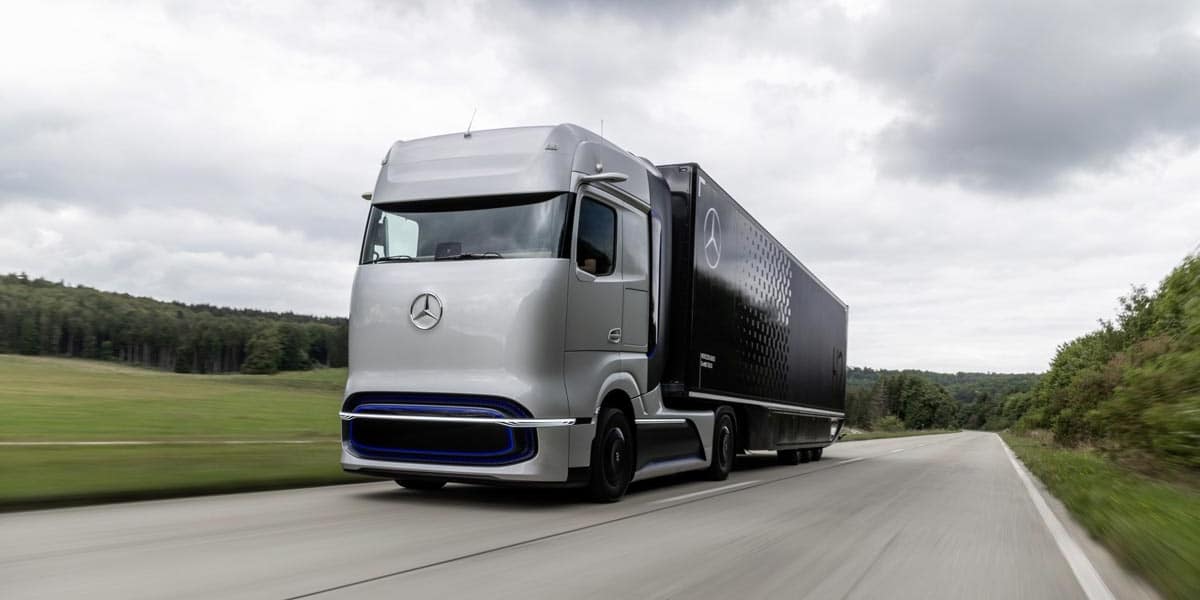Published the 26/07/2022

The French National Road Haulage Federation (FNTR) anticipates the major changes to come in this sector. Among the many challenges to overcome is the energy transition to reduce the transportation carbon footprint.
How to address the energy transition of road transport? How quickly? What opportunities are there to help green a sector that still emits a great deal of CO2? What are the obstacles facing carriers today?
Jean Marc Pellazza, Regional Representative for FNTR Normandy, answers some questions to enlighten us.
How do you assess the issue of energy transition in road transport? How can we reduce the transportation carbon footprint?
JMP: Our world is facing an unprecedented environmental challenge. Our companies feel utterly concerned by this challenge. However, trucks in particular are unfairly accused of being responsible for all ills. Whether they are from opinion leaders, political leaders, or citizens, the arguments are often the same: dangerousness, noise, pollution, etc.
And yet, our profession has been engaged in a sustainable development approach for some 20 years. It has reduced its emissions of polluting gases by more than 80%. This environmental progress is spectacular. Yet they are entirely unknown to the public. 85% of our fleets are already EURO 6 compliant.
We are working hard to make our fleets even greener. Manufacturers offer electric engines (for short-distance), and gas engines (for medium and long-distance). Ten years from now, hydrogen trucks will be on our roads!
For us, this is an ultra-priority project in a particularly complex environment in terms of financial balances, in particular, but not only. The transformations in global logistics and the soaring of raw materials prices will also have a significant impact on the energy transition.
Faced with the climate emergency, carriers are on the front line to be actors of change. Are they ready to make an extremely impactful change for their business?
JMP: Our profession is indeed on the front line. 99% of the world’s fleets still run on diesel. Our profession is firmly committed to transitioning to other energies and reducing the transportation carbon footprint.
The movement is already underway, with biofuels, CNG (gas), and a very small share of electric vehicles that is also increasing. To date, biofuels and gas are the two alternative energies that remain reliable with a considerably improved environmental balance.
Among the solutions to reduce the transportation carbon footprint, how do you view hydrogen?
JMP: Hydrogen seems to be a very promising energy, especially when we talk about renewable hydrogen. The various European investment plans are concrete proof of this. Normandy will host in Saint-Jean-de-Folleville, the largest green hydrogen (H2V) station in the world. China has already made the transition to hydrogen a national priority. Their goal is to produce 1 million hydrogen vehicles by 2030.
When made with renewable energies, green hydrogen has a positive impact on the environment! Hydrogen vehicles have the advantage of emitting water vapor and zero greenhouse gas emissions! According to the experts, hydrogen will play an important role in the market for heavy goods vehicles and medium- and long-haul freight transport. And this is thanks to the autonomy that this technology confers compared to exclusively battery-powered vehicles. The refueling is short (a few minutes) and the autonomy is more important.
On the other hand, fuel cells are compatible with harsh environments (cold or high heat). Volvo and Daimler are teaming up to produce fuel cells for trucks by 2025-2030.
What opportunities steer a transporter towards the use of hydrogen?
JMP: Hydrogen concretely represents:
- A solution to electrify our vehicle fleets while maintaining the agility we are used to with internal combustion engines (range and filling time).
- An opportunity to green the image of our profession and attract young people to our professions.
- Solutions to access this technology exist now, through territorial projects to deploy complete hydrogen ecosystems (production, distribution, uses). Carriers can already take part in these projects. The Normandy region in France is particularly active and invested in the hydrogen sector.
On the other hand, what are the obstacles to making this change?
JMP: That’s the main topic. The importance of green hydrogen (editor’s note: now called renewable hydrogen) cannot be overstated. This is hydrogen produced from water by electrolysis using green electricity. For example, there is no other green fuel on the horizon that can meet the needs of energy-intensive air, sea, and road transport.
This technology has many advantages, but the costs and technical developments still to be implemented severely hamper its use by the general public. The production and distribution of hydrogen are expensive. A heavy vehicle is currently selling for around 500,000 euros.
Finally, one of the obstacles that the fuel cell will face is its safety. Indeed, if some manufacturers ensure that their equipment is perfectly secure, it is above all the confidence of the users that must be acquired! Road transport is undergoing an “irreversible” change that will result in an explosion in its operating costs and the end of a “revolutionary” economic model driven by liquid oil for years.
In the medium term, how do you see the sector evolving?
JMP: The energy transition is a key element of environmental policy and low-emission transportation. We are committed to the deployment of an energy mix for the next 15 years in the field of road transport. This future energy mix should consist of the deployment of gas/biogas, electricity, and hydrogen.
To date, the range proposed by industrial vehicle manufacturers for all the energy options is not yet as varied as that for vehicles using diesel fuel However, this situation is expected to change rapidly by 2022/2023. The densification of the supply network remains one of the major challenges in the energy mix. It will be strengthened by the predominant role of territories and communities.
Do you want to make your hydrogen project a reality?
Contact our hydrogen expert